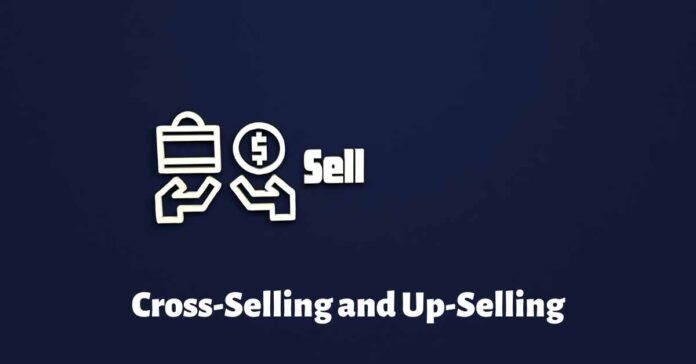Companies need sales to grow, maintain and survive. That they achieve a growing number or at least enough to achieve their objectives of profitability and sustainability is not easy.
Thus, companies start and go through different commercial paths to achieve their sales. Up-selling and cross-selling strategies are one of them. And both, put into practice separately or in a complementary way, undoubtedly provide many advantages.
However, to establish the advantages and differences between cross-selling and up-selling, it is necessary to define both concepts.
Cross-selling or cross-selling is a type of sale that seeks to increase the main sale by adding a new complementary product or service, which adds value to the first and that, together, provides a complete acquisition.
On the other hand, up-selling or incremental sales is that type of sale that, given the customer’s interest in buying a particular product or service, offers the same type of product or service with superior features, which compensate for the more significant difference of price concerning the first choice”, says the expert.
Differences Between Cross-Selling and Up-Selling
However, despite the practical definition we have just outlined, they are often easily confused, so to better understand them, the most important differences between them are offered below.
Kind of Product
Each business works differently, but logic says you can offer an up-selling first and then a cross-selling. In other words, the seller first ensures that the customer acquires the highest quality product and then has something to complement it and improve its usability.
To up-sell when a customer has bought something, you can suggest that they will have more benefits for a little more money.
Also Read: Analysis and Development of a Production Plan
To see it with a more straightforward example, if dresses are displayed in an ecommerce, cross-selling is when accessories or shoes are offered. For it to be an up-seller, the product should be a dress with similar characteristics and at a higher price.
Strategy Focus
It would help if you first defined the action you want the client to perform. In other words, when a strategy of this type is proposed, it must be focused on the user acquiring more products, that is, cross-selling or buying a higher quality product, or, what is the same, up-selling.
Offer Time Management
Managing the time of this type of strategy or promotion will depend on several factors. Among them is whether it is done before the sale’s closing, that is, if an up-selling is intended, or if, on the contrary, it can be done after it, having more time to implement a new strategy aimed at cross-selling.
Five Advantages of Using These Two Models
Using these strategies or techniques to sell more brings exciting benefits to companies that allocate resources to their implementation. All benefits are explained in more detail below.
1. Increase Sales
When these types of techniques are used, the most common is that the probability of making more sales are triggered.
2. Increase the Visibility of Other Products
By offering different products from among those that consumers select, the visibility of the rest of the products and services that they also want or need to sell is increased.
On the other hand, it is an excellent way to introduce new products to users. Through this strategy, consumers trust the product more than if they found it on the website as a new product.
3. Remind the Customer of Products of Interest
Although the user does not acquire more products, he is reminded that they exist so that when he needs them, he knows they are available.
4. Have More Consumer Information
The more products a user buys, the more information he obtains. By gathering this information, you can be offered specific products appropriate to your profile.
Typically, customers come to a site to buy a specific item or service and don’t spend time looking at other options. So if you are offered a new product, it will broaden your buying horizon and increase your sales opportunities.
5. Customer Loyalty
Certain users are familiar with these strategies, and when making a purchase, they expect to be shown a related item to avoid searching for it on the website. Not doing so can mean losing a sale since the user will not stop to look for it.
The fact that customers purchase many items in an ecommerce makes them tremendously efficient customers and generates a particular loyalty on their part. Customers want to avoid going to different customer service after purchase, preferring one vendor that offers multiple products rather than different vendors for each product.
It is necessary to define the best strategies for capturing and recirculating customer purchase decisions about our product and service offerings to sell more.
In addition, cross-selling and up-selling help to get more sales practically and straightforwardly to multiply the company’s turnover.
We must not forget that the main advantage of applying this technique is that the sale made is 100% personalized and that if users do not act, such as a purchase action or a click, they will not be able to benefit from cross-selling or up-selling strategies.
Also Read: How to Prepare the Executive Summary of Your Company














